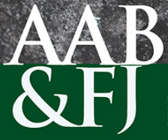Abstract
This study examines the determinants of multiple states of financial distress by applying a competing-risks model. It investigates the effect of financial ratios, market-based variables and company-specific variables, including company age, size and squared size on three different states of corporate financial distress: active companies; distressed external administration companies; and distressed takeover, merger or acquisition companies. A sample of 1,081 publicly listed Australian non-financial companies over the period 1989 to 2005 using a competing-risks model is used to determine the possible differences in the factors of entering various states of financial distress. It is found that specifically, distressed external administration companies have a higher leverage, lower past excess returns and a larger size; while distressed takeover, merger or acquisition companies have a lower leverage, a higher capital utilisation efficiency and a larger size compared to active companies. Comparing the results from both the single-risk model and the competing-risks model reveals the need to distinguish between financial distress states.
Keywords: era2015
How to Cite:
Chancharat, N., Tian, G., Davy, P., McCrae, M. & Lodh, S., (2010) “Multiple States of Financially Distressed Companies : Tests using a Competing-Risks Model”, Australasian Accounting, Business and Finance Journal 4(4), 27-44.
Downloads:
Download PDF
420 Views
2799 Downloads

